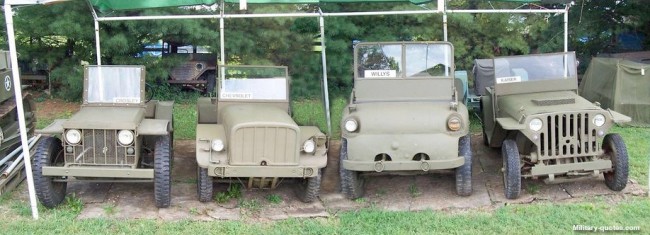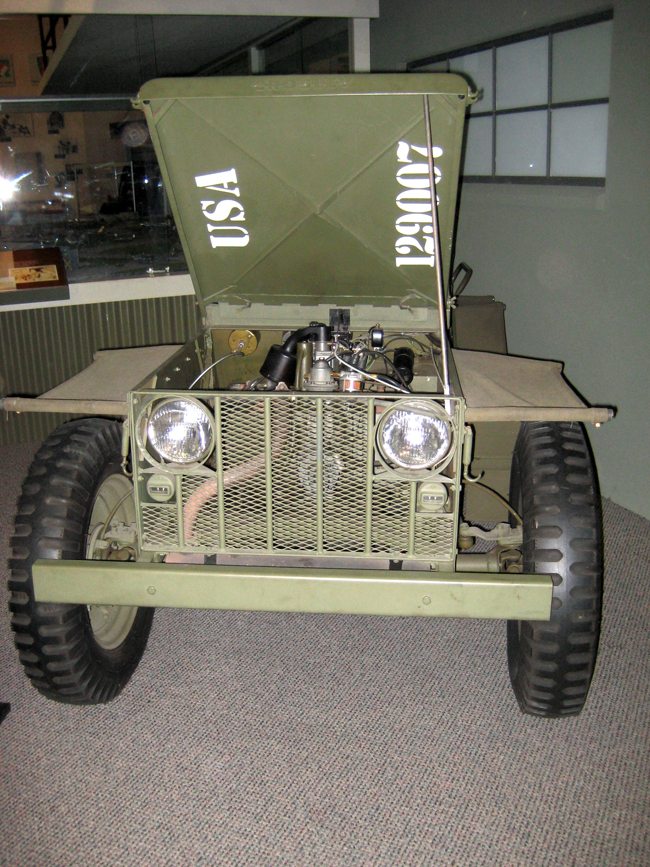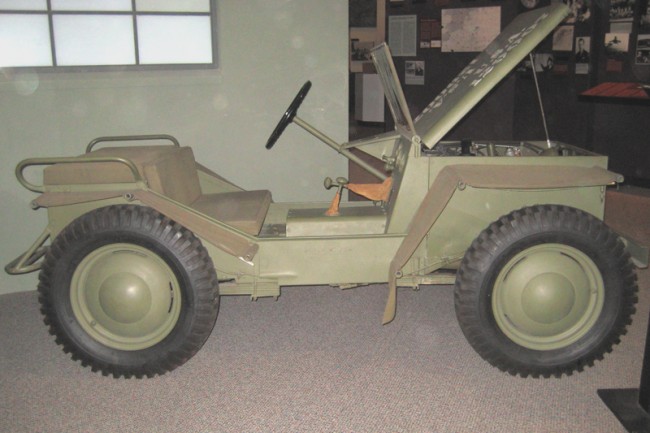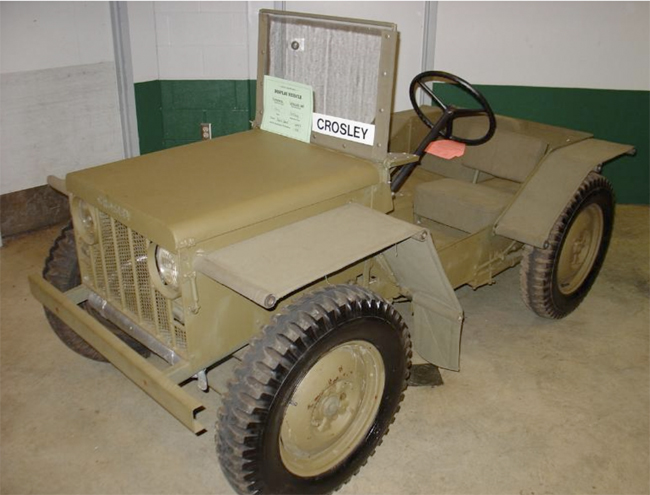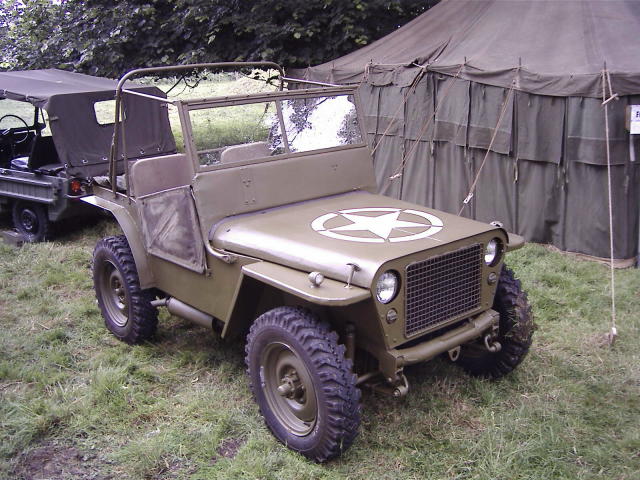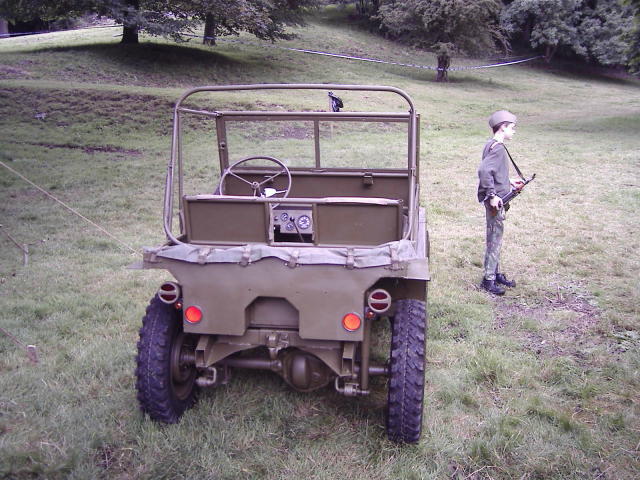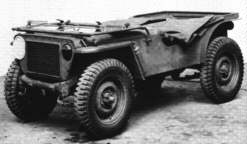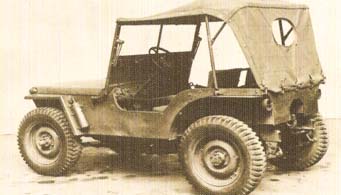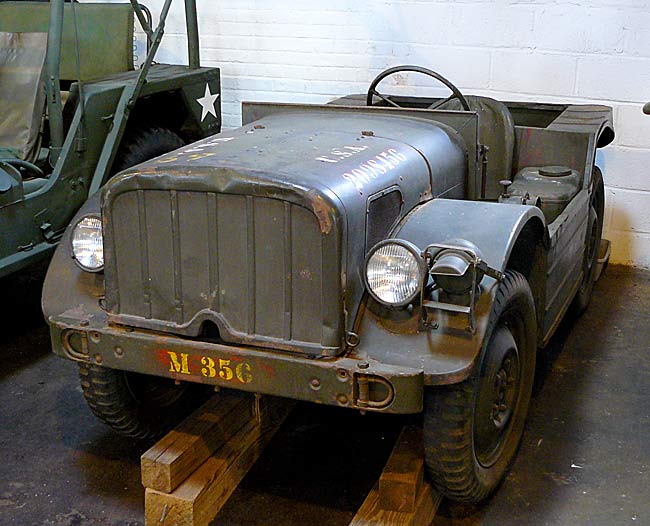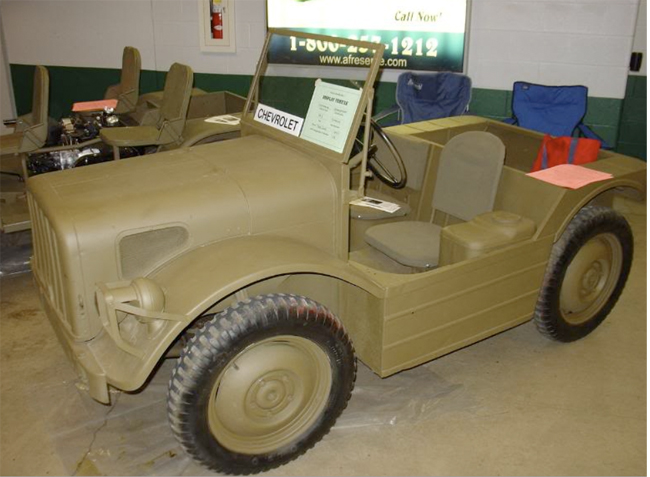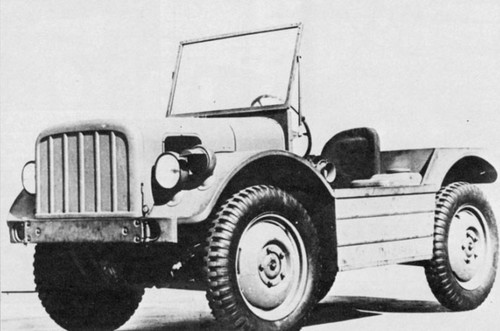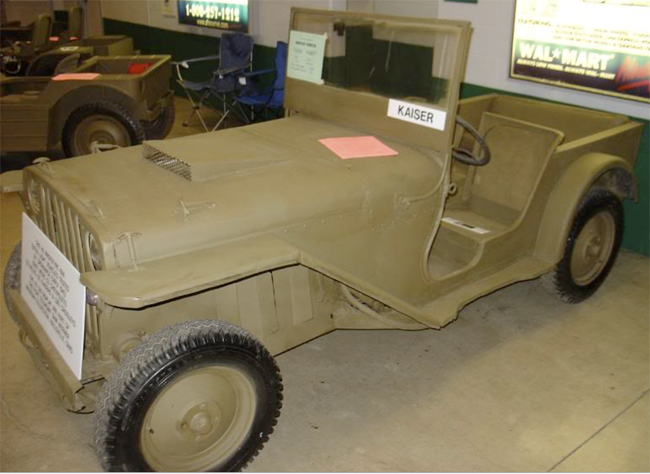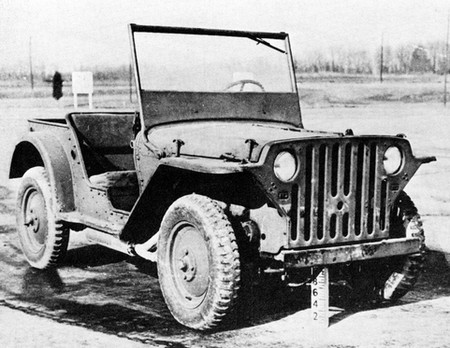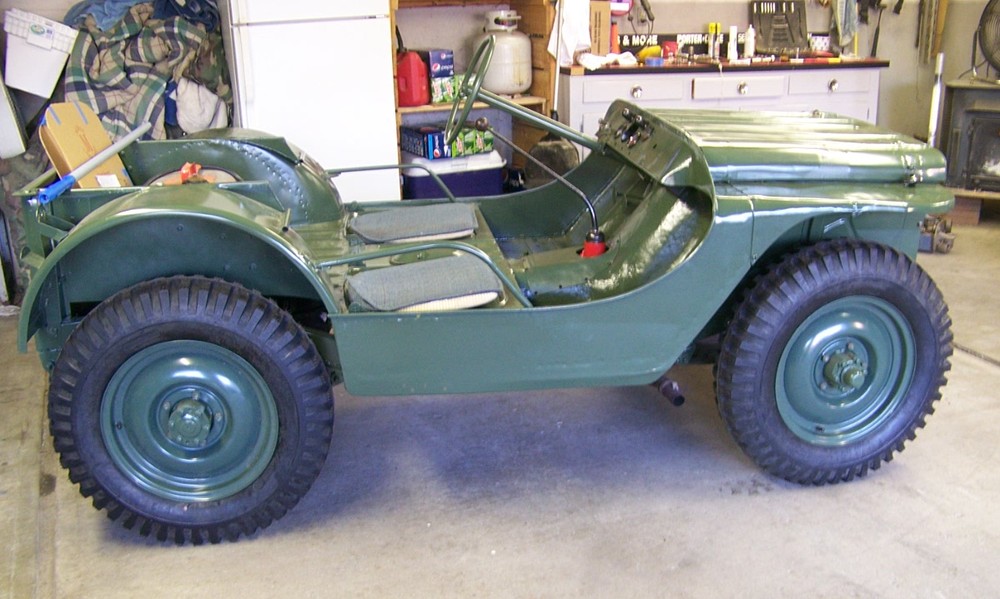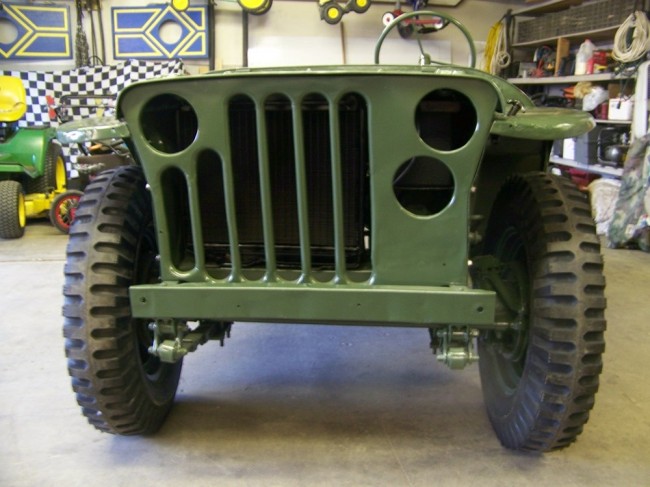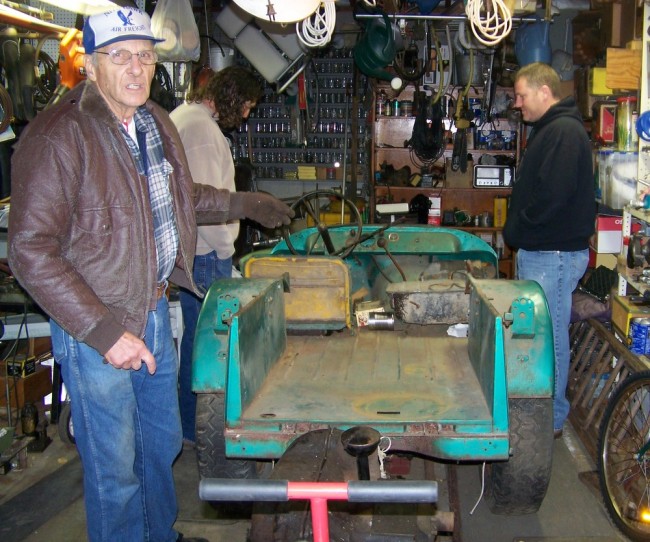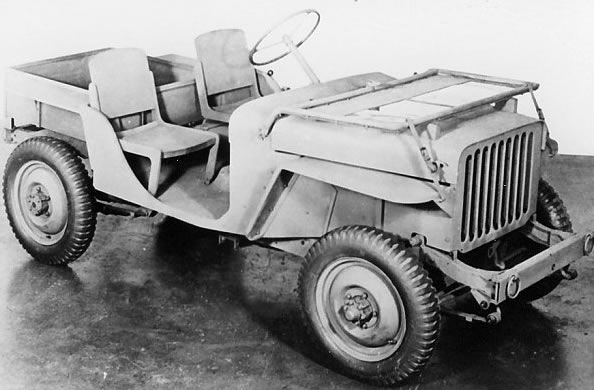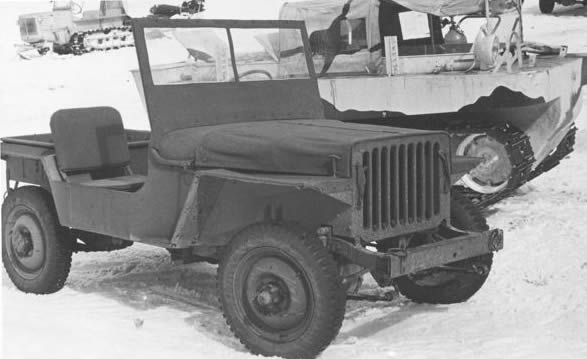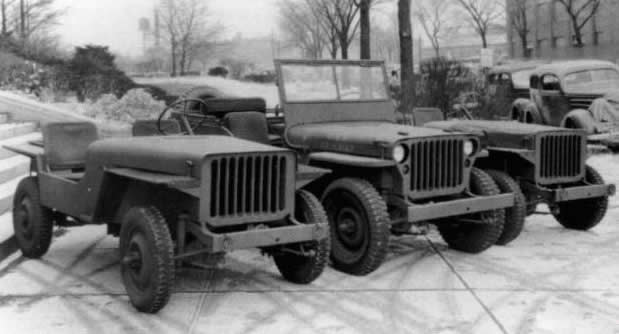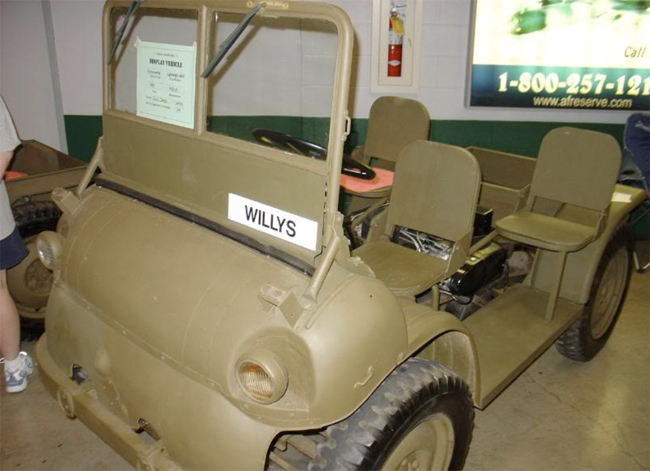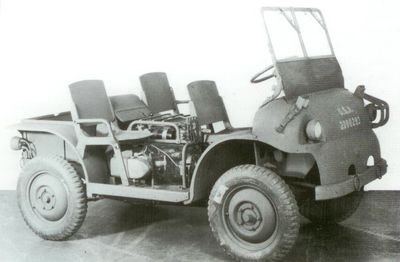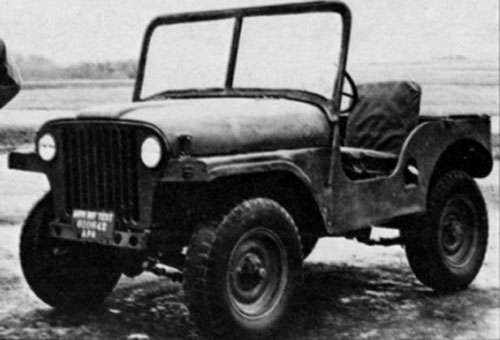The Airborne Lightweight Jeep Program
Authored by David Eilers from eWillys
During World War II, getting vehicles, especially Jeeps, onto the ground where military personnel could utilize them was of paramount importance for obvious reasons. But, how to accomplish that goal was less clear. A variety of strategies were considered, including turning jeeps into gliders (see bottom of article) or helicopters (rotabuggy) so they could fly themselves. However, both of these ideas proved unsuccessful. Therefore, the military chose to stick with transporting vehicles by plane. In order to make flights more efficient, they formed a plan to produce light duty, air-droppable jeeps. They called these jeeps extra lights (EL), lightweight jeeps or jeeplets.
The military produced a series of specifications for the extra lights and asked companies to bid on them, similar to their approach with the original jeep prototype program, where multiple companies (in that case Bantam, Ford and Willys) submitted prototypes and pilot versions of a quarter-ton 4x4 vehicle for review and testing. At least six companies responded with extra light prototypes. Despite the variety of designs produced by the manufacturers, the program never gained traction, most likely due to the fact the light jeeps weren't hardy enough to replace the sturdy jeep.
Though the program didn't survive, many prototypes did. Photos of extra lights appear at different locations across the web. In the article below I organize together any companies I've seen mentioned in conjunction with the lightweight program. The company is paired with the newest prototype photos I could find to provide the best look at these vehicles. I have yet to run across an official accounting of the organizations that submitted vehicles for the program.
For a fuller story of the history behind the lightweights, check out this 1977 article from Hemmings. It's possible there could have been additional companies that built prototypes.To start, the image below shows a photo with a rare side-by-side look at the prototypes. It was taken by Patrick Coovert in 2008 at Hallsville, Ohio. In order, from left to right are a CT3 Crosley Pup, the Chevrolet Extra Light (CEL), Willys WAC (Willys Air Cooled), and a Kaiser Extra Light (KEL). These are just a few of the jeeps developed.
1. THE LIGHTWEIGHT CROSLEYS: (More info on the Pup here)
CT-3 Pup: According to Hemmings, 36 Crosley CT-3 Pups were built during 1942 and purchased for testing in several locations. of the 36, 6 of these would make the trip to Europe. This would make the Pup the most successful of all the early lightweights produced. The Pup had a 2-cylinder 13hp engine air cooled motor and weighed 1125 lbs. Hemmings notes, "They could only carry the driver and one passenger, and the military testers, initially enthusiastic about the Pup, found weak steering knuckles, weak springs and a weak steering column."
The Crosley Auto Club claims are at least 7 known to still exist (their text has since been updated to indicate that 'several' are known to exist). One is housed at the museum in Ft. Eustis, Va, and one at the Mighty Eight Air Force Museum in Pooler, Georgia. These were taken by a Flickr use named Kate Skegg at the Mighty Eight Museum.
Here's an image from the 2006 MPVA convention in Dayton, Ohio:
2. NUFFIELD GUTTY:
There's not a whole lot of information published about the Nuffield, though it was featured on the dust jacket cover of one of my favorite books called The Jeep, by the Olyslager Organisation. It looks primarily based on a Willys design, though it was lightened as much as possible, with a removable steering wheel and fold down windshield to maximize compactness. The tests of this were successful, but apparently the Gutty was deemed unnecessary by the time it was completed in 1944. Nuffield would go on to develop another four-wheel drive vehicle called the Morris Gutty, which was the prototype for the Austin Champ.
Here are some images of an exact copy of the Nuffield Gutty lightweight jeep from a British website.
And some photos of the original:
3. CHEVROLET EXTRA LIGHT (CEL): Hemmings reports Chevrolet developed 2 prototypes with an "Indian 90-degree V-2" 45.44 cid motor. They adapted it from the Indian military motorcycle. One prototype is located in the Militia Museum of New Jersey. This image was taken by Bill Maloney.
This image was taken at the 2006 MPVA Convention:.
Here's an image of the CEL that can be found in a variety of places on the web.
4. KAISER: There were several versions of the Kaiser Extra Lightweight Jeep. Mark Askew in his Rare WW2 Jeep book has images of a couple different versions. The Kaiser 'midjet' prototype weighed about 1370lbs, while the '1160' version weighed 1520lbs.
Hemmings has several articles about the Kaisers, including Kaiser's Jeeplet, Kaiser Lightweight Spotted, and a general article about the Search for Junior Jeeps.
Here are some pics::
|
|
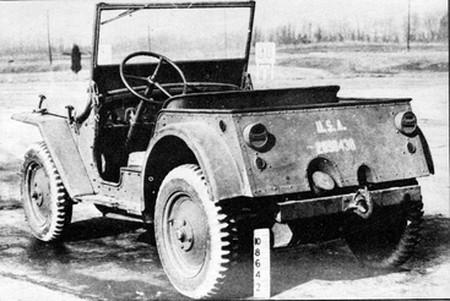
|
5. FORD "JUNIOR JEEP": This prototype still exists. It is owned by Ted Wisniewski of Belleville, Michigan, and was highlighted in an article at Hemmings. A commenter to the article noted he had done some jeep research in the Ford archives and uncovered a wooden model of this prototype, images of which haven't surfaced online yet.
From Fred Crimson's Book “U.S. Military Wheeled Vehicles,”, via the Hemmings website, comes this paragraph explaining more about Ford's prototype:
For reasons which can only be speculated on, the little miniature Jeep was not entered in the competition, and the tests proceeded without Ford’s contribution. The engine for this vehicle was a 71 cubic inch agricultural tractor powerplant which produced good torque, but not much horsepower. Perhaps ford realized that the combination of low horsepower and downsized components resulted in an unacceptable vehicle. The other manufacturers did not seem to realize this until the tests were completed and all vehicles had failed. The tires were 5.00x17s with agricultural type tread. It was a clean and well integrated design, even if the offset grille looks a little strange. The radiator had been offset to allow clearance for the steering column. A blackout driving light is recessed below the left headlamp.
6. WILLYS: Naturally, Willys also developed a series of light jeeps. Here are a few. Mark's Rare WW2 Jeeps has some pics of both the Willys MB-L and L2. This photo was published on Jedsite.info and shows the first MB-L.
This photo shows the Willys MB-L2:
and, a photo of the MB-L2 next to a standard MB:
Willys Pilot WAC or Jeeplet (harley davidson engine)
Willys WAC or Jeeplet (harley davidson engine):
Willys Aero Jeep (bobcat). This looks very similar to the CJ-4 prototype:
After WWII, lightweight jeep development continued. Some even reached production. For example, the Mighty Mite was produced by AMC for the Marines. It weighed only 1700lbs. South Africa employed an airborne jeep called the Jakkal. Its lightweight fiberglass body appears to have helped limit the weight to only .35 tons (700lbs)!
The MB/GPW Glider (very unique story):
As mentioned earlier, an alternative strategy for flying planes into small places was to transform them into temporary gliders. Sam Thomas (who runs the Motor Pool in Chino Valley, AZ) shared a story told to him by his friend Lee (recently deceased) about an experimental jeep glider. Starting in WWII, Lee's family spent decades in the military and in motor pools. According to Lee, not unlike the Rotabuggy, the military also transformed a jeep into a glider capable of carrying eight personnel. The Army accomplished this by attaching glider pieces to a jeep. The jeep was then pulled into the air, like any other glider, so it could fly to a landing spot. Once down, charges would be ignited and the pieces would fall off. Then, the jeep could be driven away.
While pre-European D-Day tests were successful in the United States, a test of the glider system in Britain failed to the point that the army considered this idea unfeasible, with the differences in climate said to be the main culprit for the failure. Specifically, the additional humidity in northern Europe was blamed for the poor performance. No photos or drawings of this project have surfaced, but if anyone knows something, please let me know (David Eilers: d [@] ewillys.com)?
RELEVANT LINKS:
- Hemmings.com's Search for the Junior Jeep is a good article for lightweight jeep history.
- Rare WW2 Jeeps, by Mark Askew, has a variety of lightweight photos.
- Jeeps 1941-45 By Steen Zaloga
- Jeep by Jim Allen
 Author David Eilers grew up in the Seattle area among jeeps and jeepers, camping and exploring the Pacific Northwest. He's operated eWillys, a vintage jeep website, for more than six years. He's won awards for his jeep community efforts and toured the nation giving presentations. Learn more about him and read his latest book, The Amber Panels of Konigsberg.
Author David Eilers grew up in the Seattle area among jeeps and jeepers, camping and exploring the Pacific Northwest. He's operated eWillys, a vintage jeep website, for more than six years. He's won awards for his jeep community efforts and toured the nation giving presentations. Learn more about him and read his latest book, The Amber Panels of Konigsberg.
